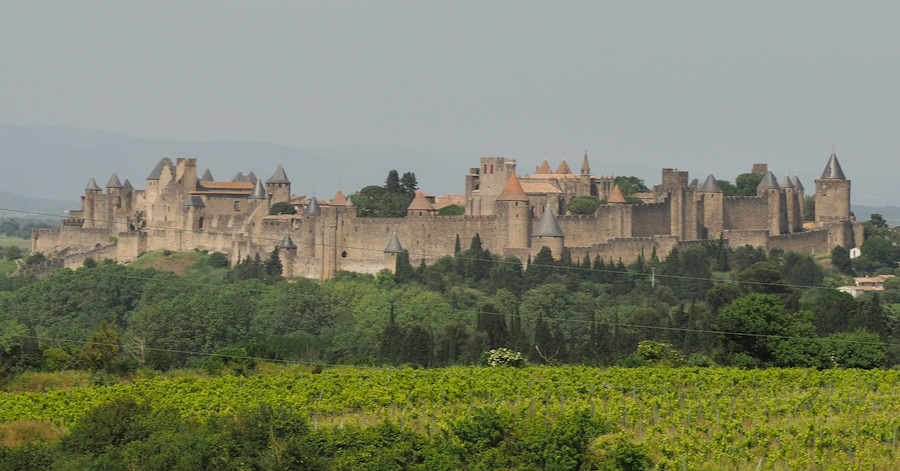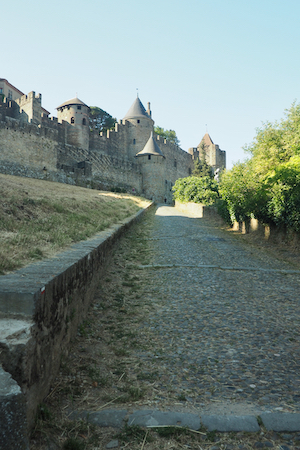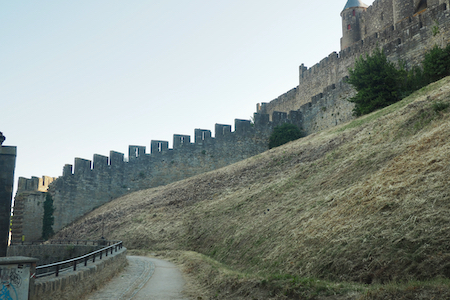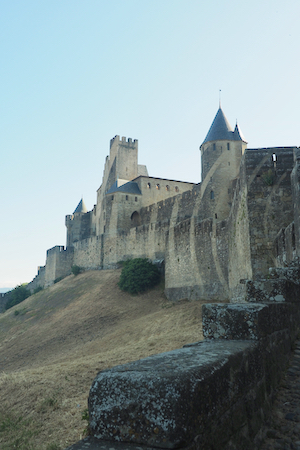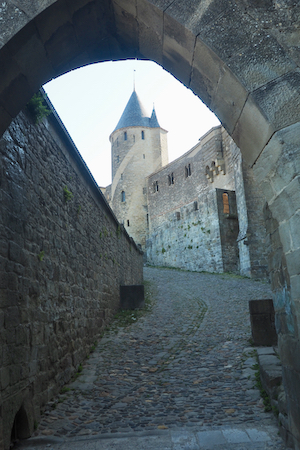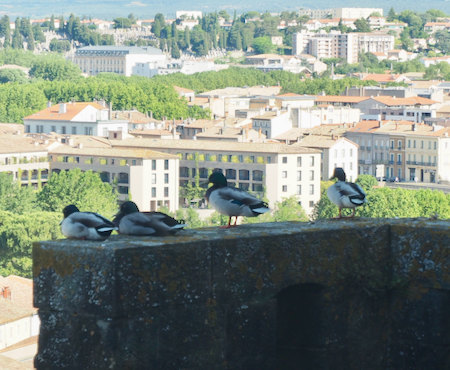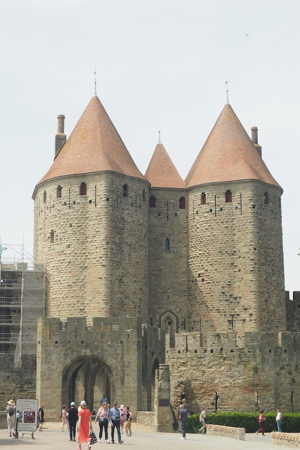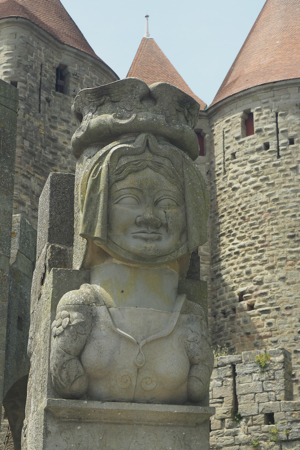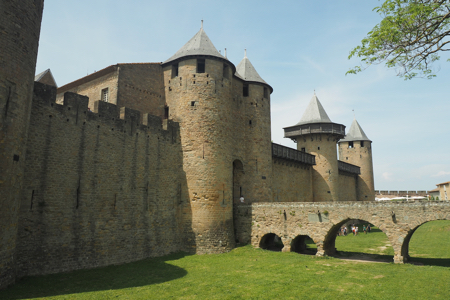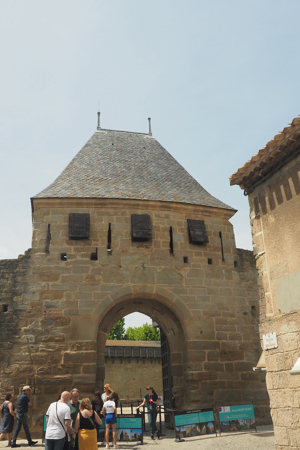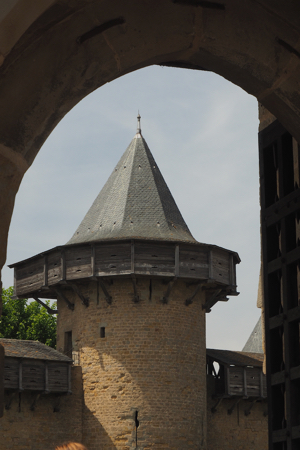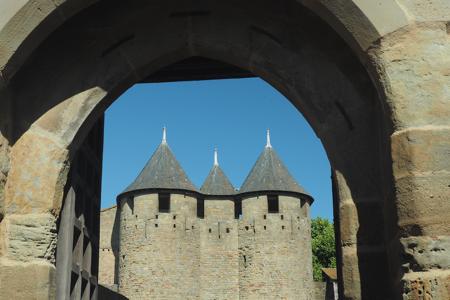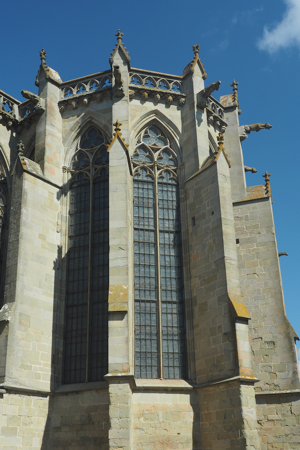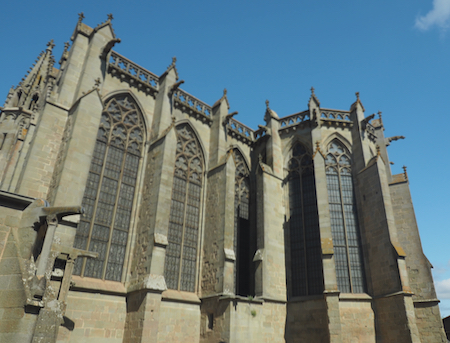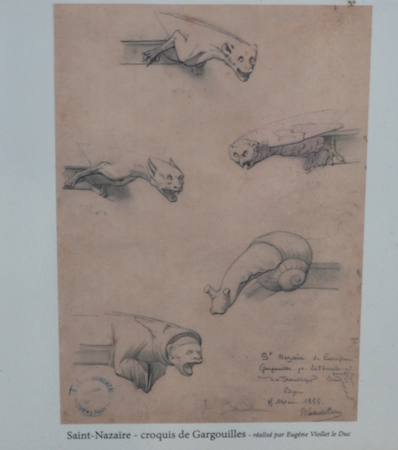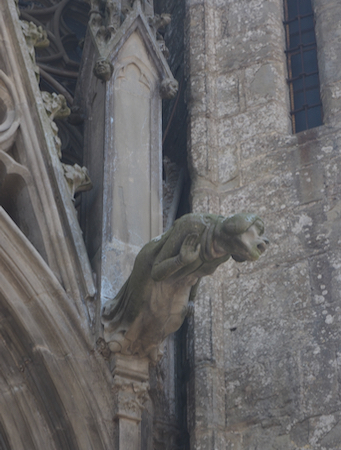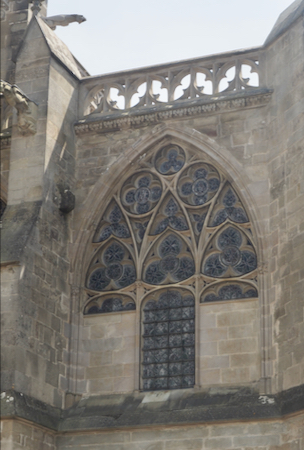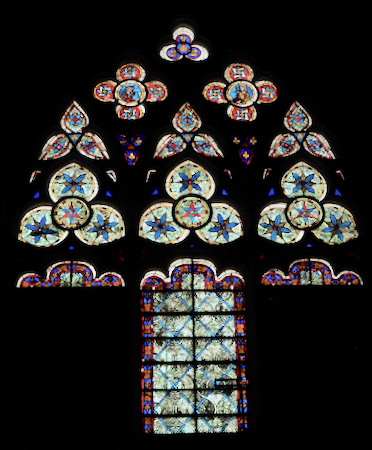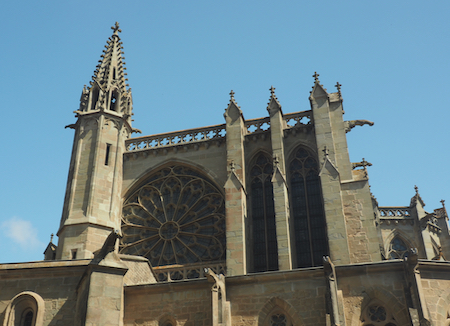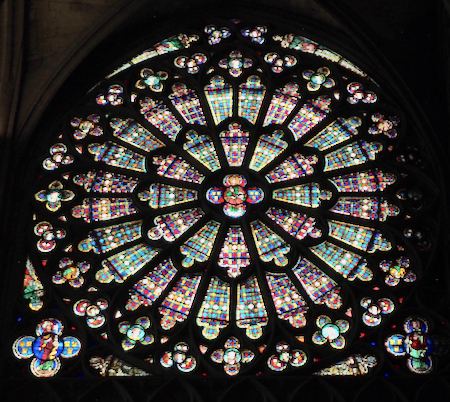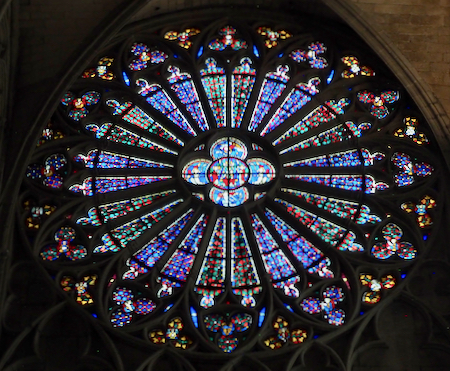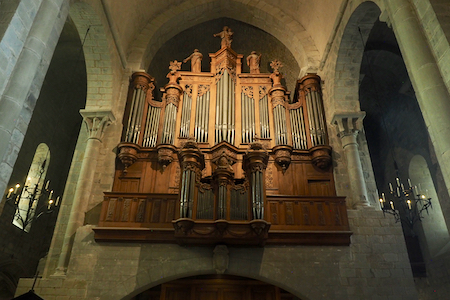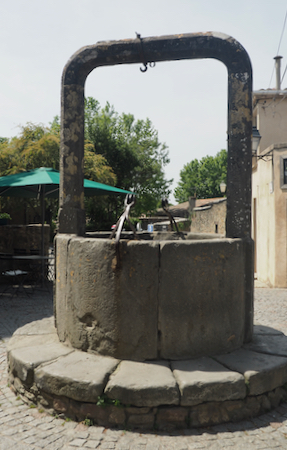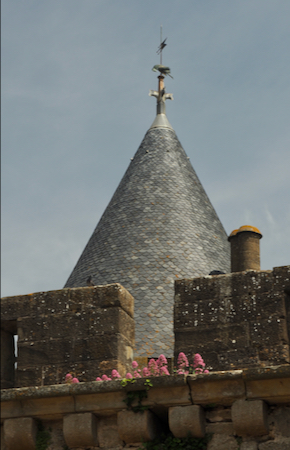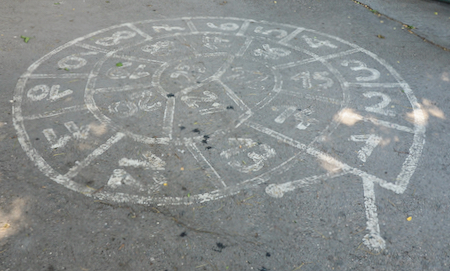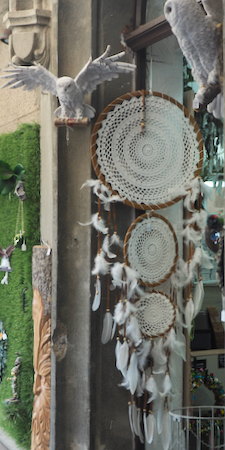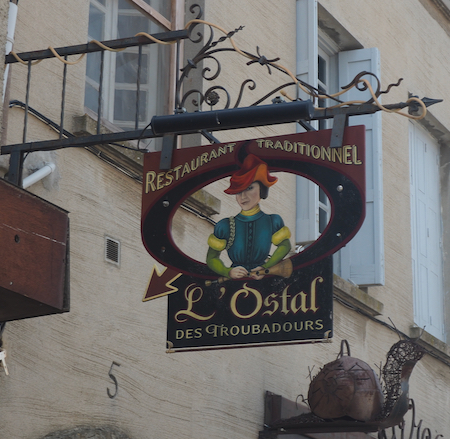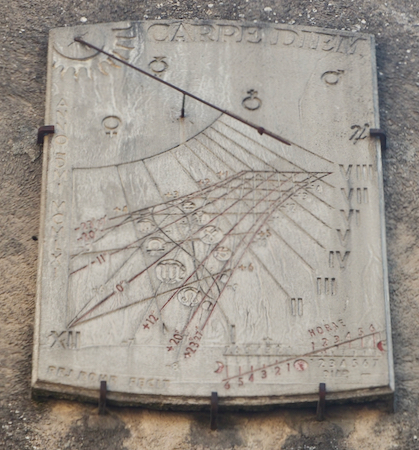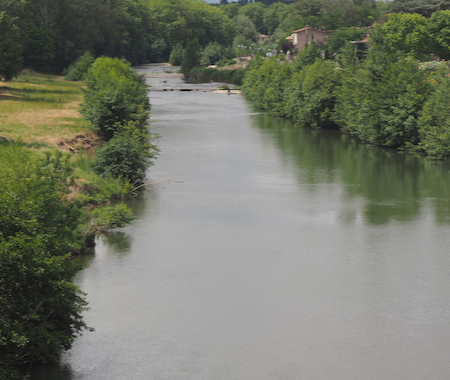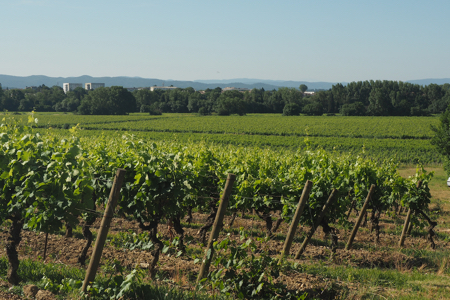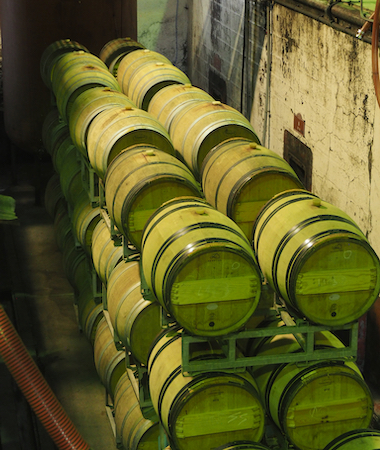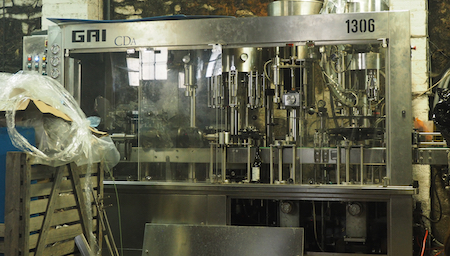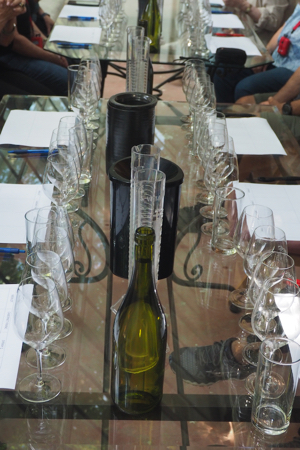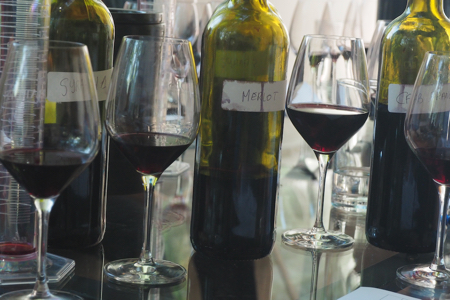Sat., 6/4/22 - Albi and Carcassonne
Today's drive, another 7-hour tip, took us from Sarlat to Carcassonne with a 2-3-hour stop in Albi. The Albi information is covered with the Insight part of this presentation (use your "BACK" button to return here).
The new bus was an improvement - it has 33 seats so we each can have two seats. This is a luxury even though there is still no leg room. Our knees push into the seat in front of us, there is no foot rest, no plugins, and nowhere for a water bottle. Still a far cry from the "49-seat coach" promised in the OAT pretrip materials.
The first break of the day was supposed to be at a gas station on the toll road - for 20 minutes and with lots of toilets and snacks. Instead we stopped in a village at a coffee shop with one toilet. Celia (OAT) bought coffee and chocolate-covered graham cracker cookies. We were there almost an hour.
Albi was our lunch stop - 2-3 hours.
Finally arrived in Carcassonne and checked into our hotel: The Tribe Hotel. It is described as a “new concept” hotel. No luggage racks, no drawers, no shelves. There are beds, thankfully. These have space underneath to roll in your suitcase. This makes the bed rather high off the floor and you have to constantly bend over, or get down on your hands and knees, to access your suitcase. The place must have been chosen by one of the 20-somethings in the Paris office. We have one chair and look out at a lovely gravel roof.
Dinner was beer and pizza at a place six of us finally found about a mile from the hotel - it was Sunday so there weren't many choices.
Carcassonne is a wonderful old Medieval walled city. We were fortunate to visit it twice on this trip to France.
Celia led us on a tour of the Cite de Carcassonne - a local guide would have been nice. We entered by the back route and ended at the drawbridge (main tourist entry) where we entered with the Insight tour. The walk up to the castle was difficult. The cathedral was closed for mass at 11 - so glad we saw the inside last time. The castle was absolutely crowded.
Cite de Carcassonne
"Back" entry to the Cite de Carcassonne
Walls and ramparts
Walls and ramparts
Altogether a steep climb up to the entry
Tower
Arrow slits in the tower
Wall and moat
Never seen Mallard ducks up so high!
Approaching the back gate
Main tourist entrance
Bust of Lady Carcas
Carcassonne is named after Lady Carcas who, according to the legend, saved the city (castle) from siege by feeding all the remaining grain to a pig and then she threw it over the wall at the attackers. The legend says that the pig split open and the grain spilled out so the attackers thought if the besieged had enough food to fatten a pig, they could survive a long time inside the castle, so they left.
Moat and access bridge
Entrance to the Castle at the site (we didn't go in)
Inside the Castle compound
Inside the Castle compound
Basilica of Saints Nazaire and Celse
Tower detail
Lots of Gargoyles
Drawings of Gargoyles
Gargoyle
Gargoyle
Stained glass window - from the outside
Same window from the inside looking out
Church exterior
Rose window
A second Rose window
Organ
Well
Sign for the school
Game on the pavement in the schoolyard
Different dream catcher
Nice sign
Sundial
Cobblestone street
Manhole cover
Wall murals along the route to the Cite de Carcassonne
Bridge from hotel to the Cite de Carcassonne
Nice roof
Before dinner we walked along the Aude river where we saw a Nutria, men playing pétanque, a playground with kids and their nannies, and rapids with people cooling their feet in the water. Since this is another bank holiday weekend, there are many people - French and tourists - out walking around.
Probably a nutria
Aude River
Very large horseback riding group
Had to wait to cross the street to get to the hotel
Mon., 6/6/22 - Carcassonne and the Auzias Winery
The OAT “Day in a Life” for this French Impressions trip was to a winery, Auzias. The winery was destroyed during the French Revolution and rebuilt in the 1800s. Vines were planted in the 1830s and wine was produced by 1872. There are now 115 acres of grapes of two varieties. They make four kinds of blended red wines by changing the percentage of grape combinations in the blended wines.
After walking to the vines and then to the vats and barrels and learning about maturation and aging, we looked at the machine that cleans the bottle, fills it, adds sulfate, corks it, caps it, labels it, and then a person puts it in a box to age some more in the glass bottle.
The activity for the day was first wine tasting and then experimenting with combining different amounts of each of four wines to produce a unique (to each person) "blended" wine. Lunch followed.
Auzias' products
Coat of arms of the winery
Grape vines
Grape vine
Aging the wine
Bottling machine
Ready to mix
Ready to taste
| Return to Top | Return to Itinerary | Return to Trips page to view other trips | Return to Dreamcatcher Home Page |
